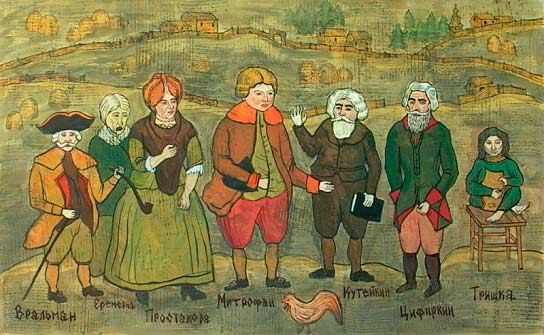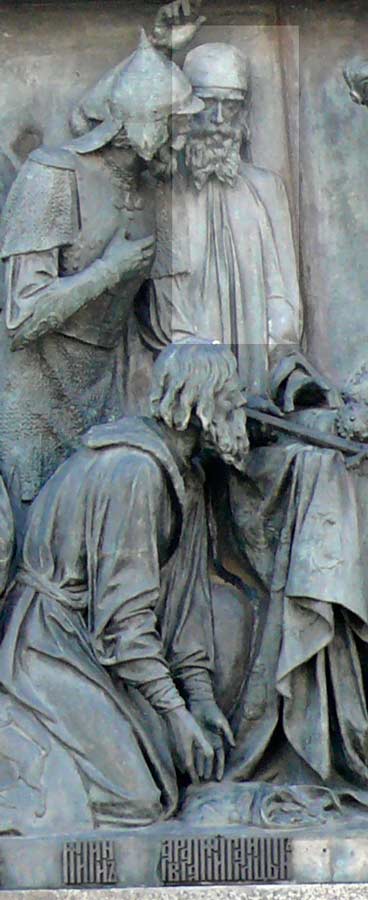Watch books, read pictures
 “The boundaries of my language represent the boundaries of my world.” This is what Wittgenstein said. And then, of course, you can not argue. Man is a creature: he likes to give names to everything. Even things that obviously do not need names. For us, a thing exists only if it has a name / title.
“The boundaries of my language represent the boundaries of my world.” This is what Wittgenstein said. And then, of course, you can not argue. Man is a creature: he likes to give names to everything. Even things that obviously do not need names. For us, a thing exists only if it has a name / title.
And most of us, if we ask what literature is, will say something like: “this is a story told through words.”
We are so used to it. So we were taught in school. Well, in general, all these old libraries, manuscripts, archives – because there are solid words, right? We grew up in an environment where text is primary.
But there is one interesting detail: to communicate, we use speech, but we think in images.
And if we think in images, then what will happen if we try to tell a story with the help of images? Is it possible? And if so, can such a story [set of images] be considered as literature?
The authors below have answered these questions a long time ago – in the affirmative:
Each type of art has two points of reference: the first is the moment of birth, the second is the moment of recognition, exit from the ghetto.
Take, for example, the theater. In the Renaissance, theater was considered the bottom of art, entertainment for commoners, and writing plays was no more prestigious craft than shoemakers. And if Shakespeare had decided to publish his texts during his lifetime, he would have been ridiculed (as ridiculed by his contemporaries, playwright Ben Johnson, who published his Collected Works) (for more details, see Borges’s essay “Shakespeare’s Mystery”)).
In the same position – “entertainment for commoners” – for a long time there were also comics. An artist named Art Spiegelman brought them out of the ghetto of art.
In 1977, he and his wife, Francoise Mulie, moved to New York, bought a printing press and founded RAW magazine. “RAW” in some way was a real anti-mix – on its pages all the strangest and most experimental appeared; the main goal is the violation of all possible laws of the genre; unlike the frivolous, teenage, superhero nonsense from Marvel, everything that came out under the cover of “RAW” was aimed at finding a way out of the way, a way to break the template; Each number of Spiegelman tried to make unique, sometimes came to vandalism – he tore random pages in all copies to make each of them unique.
It was there, in the magazine “RAW”, in the 1980s that Maus began to appear in parts. The plot of the book is based on the real story of the life of Father Art, Vladiska Spiegelman, told with the help of black and white pictures. Here everything is black and white, everything is brought to the limit – even the nationality: the Jews are mice, the Germans are cats, the Poles are pigs. And the heroes themselves are almost no different from each other – except by clothes and names. It is this simplification, the reduction to the condition of conditional units, sketches, that made the “Mausa” part of great literature: mice here, for nothing, that everything looks the same as history moves as an individuality and breaks, as it were, beyond the limits of its stereotypical mouse , beyond the static picture.
For the comic industry, Mouse did the same thing as Twin Pix for the TV serial industry. Prior to Twin Pix, no one could have imagined that the television series could be smart and exciting. Until the end of the 80s, the soap opera was the most popular car-keeper. They filmed these “operas” mainly in order to score a daytime broadcasting network, entertain housewives at televisions and insert advertisements for detergents (hence the epithet “soapy”). And then “Twin Pix” appeared – the series is so strange and addictive that literally everyone was discussing it – even the first persons of the states. They say that Mikhail Gorbachev tried, through George Bush Sr., to find out from the producers of the series who killed Laura Palmer. And the English queen canceled the Paul McCartney concert at Buckingham Palace, because she was afraid to miss the next episode.
Much the same thing happened with the comic industry after the release of the Maus. He divided their chronology into “before” and “after.” Before 1991, graphic novels were considered a marginal genre for children and adolescents (with rare exceptions like Alan Moore’s “Keepers”), after — after Spiegelman was awarded the Pulitzer Prize — even the most conservative publications and literary critics responded with reviews of “the first ever comic about the Holocaust. ”
Another important stage in the growing genre was the comic “Here” by Richard McGuire (and it appeared again thanks to Art Spiegelman and his magazine “RAW”).
However, the “comic book” is not quite an exact definition. In fact, the work of McGuire looks more like a graphic installation, and the author chose the form of the book rather out of habit, out of respect for the genre. If “Here” is divided into separate pages and hung out in the gallery – the effect will be just as strong; and maybe even stronger.
McGuire himself spoke about the idea in one of the interviews: “I remember that I went to Art Spiegelman’s lecture, he told me about the history of comics. Among other things, he said that comics are like narrative charts.



